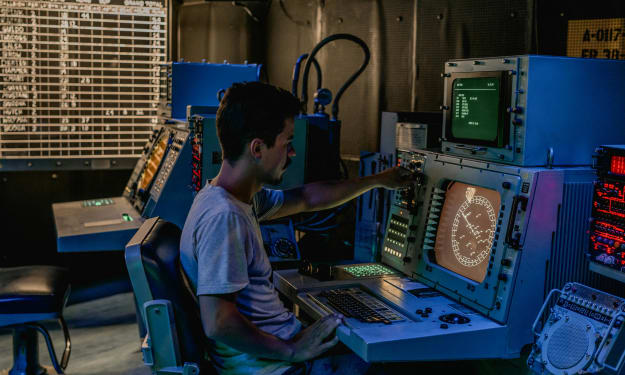Driving Towards a Revolution in Transportation and Urban Planning
Autonomous Vehicles

The advent of autonomous vehicles, often referred to as self-driving cars, has ignited a transportation revolution with the potential to reshape the way we move and interact with cities. These vehicles, equipped with advanced sensors and artificial intelligence, can navigate without human intervention, promising improved safety, reduced congestion, and enhanced mobility. As the world transitions towards a future with autonomous vehicles, it becomes imperative to explore their progress, potential impact on transportation, and the transformative implications for urban planning.
The journey towards fully autonomous vehicles has been marked by remarkable technological advancements:
Sensing and Perception: Autonomous vehicles utilize an array of sensors, such as LiDAR, cameras, radar, and ultrasonic sensors, to perceive their surroundings, detect obstacles, and interpret road conditions.
Machine Learning and AI: Artificial Intelligence and machine learning algorithms allow autonomous vehicles to learn from vast amounts of data, enabling them to improve their decision-making capabilities over time.
Connectivity: Autonomous vehicles often rely on high-speed internet connectivity to access real-time information, including maps, traffic data, and software updates.
Human-Machine Interface: Interfaces inside autonomous vehicles are designed to facilitate communication between passengers and the vehicle's AI system.
Regulatory and Safety Frameworks: Governments and regulatory bodies are working on defining safety standards and regulations for autonomous vehicles to ensure public safety.
Autonomous vehicles are poised to revolutionize transportation in numerous ways:
Enhanced Safety: Autonomous vehicles have the potential to significantly reduce traffic accidents and fatalities, as they can avoid human errors and react faster to potential hazards.
Increased Efficiency: Self-driving cars can optimize traffic flow, reduce congestion, and improve fuel efficiency, resulting in a smoother and more sustainable transportation system.
Improved Accessibility: Autonomous vehicles may enhance mobility for the elderly, disabled, and those without access to traditional transportation options.
Ride-Sharing and Mobility Services: Autonomous vehicles are likely to drive the expansion of ride-sharing and on-demand mobility services, transforming the concept of car ownership.
Last-Mile Delivery: Autonomous vehicles can revolutionize delivery services, enabling efficient and cost-effective last-mile delivery solutions.
The integration of autonomous vehicles requires thoughtful urban planning to harness their full potential:
Infrastructure Adaptation: Cities must adapt their infrastructure to support autonomous vehicles, including road design, smart intersections, and charging stations.
Urban Design and Land Use: The rise of autonomous vehicles may lead to changes in urban design, with less need for parking lots and more space for green areas and pedestrian zones.
Mixed-Use Developments: Autonomous vehicles may drive a shift towards mixed-use developments that promote walkability and accessibility.
Public Transportation Integration: Urban planners must consider the integration of autonomous vehicles with public transportation to create a seamless, multimodal transportation network.
Data and Connectivity: Cities must build a robust data infrastructure to support the connectivity demands of autonomous vehicles and ensure the secure exchange of information.
While the prospects of autonomous vehicles are promising, several challenges and considerations must be addressed:
Safety Concerns: Ensuring the safety of passengers, pedestrians, and cyclists remains a top priority, requiring rigorous testing and validation of autonomous vehicle systems.
Regulatory Framework: Governments must establish clear and comprehensive regulations to govern the deployment and operation of autonomous vehicles on public roads.
Ethical Dilemmas: Autonomous vehicles may face ethical dilemmas in making split-second decisions, raising questions about responsibility and accountability.
Infrastructure Upgrades: Retrofitting existing infrastructure and developing new infrastructure to accommodate autonomous vehicles may require substantial investments.
Cybersecurity: Protecting autonomous vehicles from cyber threats and hacking is critical to maintaining public trust in this technology.
As the autonomous vehicle revolution unfolds, key steps must be taken to navigate this transformative journey:
Pilot Programs and Testing: Pilot programs and extensive testing are essential to gain insights into the practical implications and challenges of autonomous vehicles in real-world scenarios.
Public Awareness and Education: Educating the public about autonomous vehicle technology, its benefits, and potential impacts is crucial to garner support and understanding.
Public-Private Partnerships: Collaboration between governments, private industries, and academic institutions can accelerate the development and deployment of autonomous vehicles.
Equity and Accessibility: Efforts must be made to ensure that the benefits of autonomous vehicles are accessible to all segments of society.
Continuous Innovation and Adaptation: As technology evolves, ongoing innovation and adaptation will be vital to keep pace with the changing landscape of autonomous vehicles.
The rise of autonomous vehicles represents a paradigm shift in transportation and urban planning, offering a glimpse of a future with enhanced safety, efficiency, and accessibility. The fusion of advanced technology, regulatory frameworks, and innovative urban planning is shaping a world where autonomous vehicles seamlessly integrate with our daily lives.
As society embraces this transformation, it is crucial to address challenges, prioritize safety and ethics, and work collaboratively towards a future where autonomous vehicles unlock new possibilities for mobility, sustainability, and urban development.
About the Creator
Reynol Brennan
A small blogger who shares emotions, life, life insights, and short stories, and provides everyone with happiness, growth, and common sense of life.
Enjoyed the story? Support the Creator.
Subscribe for free to receive all their stories in your feed. You could also pledge your support or give them a one-off tip, letting them know you appreciate their work.






Comments
There are no comments for this story
Be the first to respond and start the conversation.